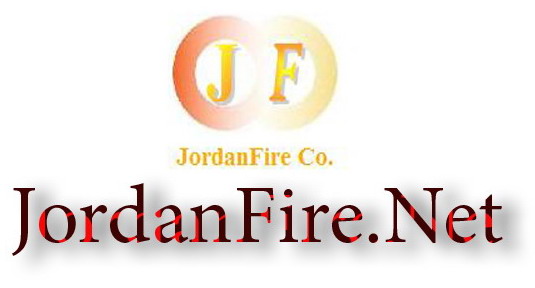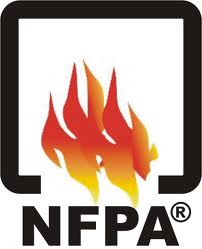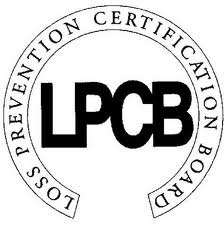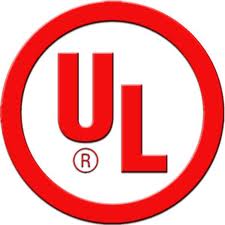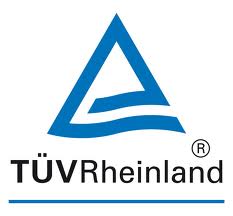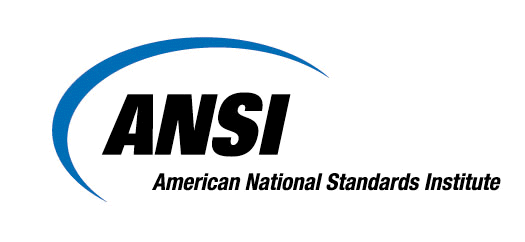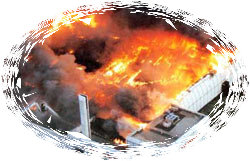
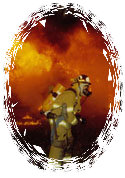


Fire Science > Fire Classes
In firefighting , fires are organized into several fire classes that describe what kind of fuel or heat source it has, and by extension what methods will be necessary to contain it or put it out .
1- The United States system of classifying fires
A - Class-A fires
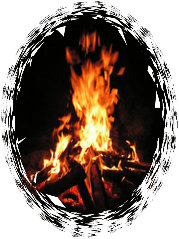
Figure 1-4 A campfire would be an example of a class-A fire.
Class-A fires are the most common type of fire that occurs when a material such as wood becomes sufficiently hot enough, and has oxygen available to it, causing combustion . (See fire triangle ) At this point the material bursts into flame, and will continue burning as long as the fire triangle - heat, fuel, and oxygen - continues to be available to it.
Class-A fires are used all around buildings and everywhere in the world in controlled circumstances, such as a campfire , lighter , match , or candle . This makes an example easy to come by. For example, a campfire has a fire triangle - the heat is provided by another fire (such as a match or lighter), the fuel is the wood , and the oxygen is naturally available in the open-air environment of a forest. This fire is not dangerous, because the fire is contained to the wood alone and is usually isolated from the ground by rocks. However, when a class-A fire burns in an environment where fuel and oxygen are in accessible positions, the fire can quickly grow out of control - this is the case where firefighting and fire control techniques are required.
Class-A fires are fairly simple to fight and contain - by simply removing the heat or oxygen (or in some cases fuel), the fire triangle collapses and the fire dies out. The most common way to do this is by removing the heat by spraying the fire with water . Other means of control or containment would be to "smother" the fire with carbon dioxide or nitrogen from a fire extinguisher , cutting off its oxygen and causing the fire to die.
Class-A fires are the most commonly encountered fires, and as such most fire departments have equipment to handle them specifically. While this is acceptable for most ordinary conditions, most firefighters find themselves having to call for special equipment such as foam in the case of other fires.
B - Class-B fires
Class-B fires are combustible fuels, hydrocarbons or solvents on fire. These fires follow the same basic fire triangle - heat, fuel, and oxygen - as class-A fires, except that the fuel in question is a hydrocarbon or solvent. This changes the strategy that must be used when fighting them considerably.
If the fuel is a lighter-than-water liquid such as oil or gasoline, as is the case with many, water that would ordinarily be used for fighting a class-A fire would end up spreading the fire, as the on-fire hydrocarbon would float on top of the water and continue burning. Specialized methods not usually available to regular fire departments are required to contain and put out this kind of fire.
One method would be dropping or spraying a chemical retardant, such as slurry , onto the fire. This is usually done by plane, and the pumps required to handle a chemical retardant would not often be available to ground fire crews - this makes its use against class-B fires limited. A carbon dioxide fire extinguisher may be used on small class-B fires, though some fire extinguishers are not designed to fight against all classes of fire.
The most common method for fighting class-B fires would be to use a type of protein -based foam to cut off the fire's oxygen and cool the hydrocarbon/solvent. This can be fired from any pumper, even ones that were designed to hold only water, meaning that it does not require any specialized equipment. However, most fire departments do not have direct access to foam and require for it to be transported to them - this can delay firefighters severely and make fighting class-B fires a logistical problem.
C - Class-C fires
Class-C fires are electrical fires, where the heat side of the fire triangle is caused by, for example, a short-circuiting machinery or overloaded electrical outlets. These fires can be a severe hazard to firefighters using water - when the solid stream of water hits the electrical fire, the electricity is conducted through it and into the hose, then into the firefighter's body - electrical shocks have caused many firefighter deaths.
There are two main ways of fighting a class-C fire - cutting off its oxygen, or simply turning off the electricity to the fire from a breaker . A class-C fire could be put out with a fire extinguisher rated for class-C fires, or with protein foam, but the primary approach would be to simply turn off the power as said above - this would cause the fire to become an ordinary class-A fire, or perhaps die out entirely.
D - Class-D fires
Class-D fires are metal fires. Certain metals, such as sodium , titanium , magnesium , potassium , uranium , lithium , plutonium , calcium and others are flammable. Magnesium fires and titanium are common. When one of these combustible metals ignites, it can easily and rapidly spread to surrounding class-A materials.
Generally, masses of combustible metals do not represent unusual fire risks because they have the ability to conduct heat away from hot spots so efficiently that the heat of combustion cannot be maintained - this means that it will require an extreme amount of heat to actually set the material on fire. Generally, metal fire risks exist when sawdust, machine shavings and other metal fines are present.
Water and other common firefighting materials can excite metal fires and make them worse. A special extinguishing agent is needed. This extinguishing agent is usually made up of dry powder firefighting materials, such as powdered copper . Dry powder extinguishing agents eliminate Class-D fires by removing heat (copper powder has a very high thermal coefficient, making powdered copper the most usual type of class-D extinguishing agents) and by smothering the enflamed metal.
Some extinguishers use dry chemical extinguishing agents. This is easily confusable with dry powder . They are quite different, and using one of these extinguishers in error in place of dry powder can actually increase the size of a class D fire much like water.
Class-D fires represent a unique hazard because of their rareness and extremely high temperature (a high temperature is required to set the materials on fire). Even a small class-D fire can spread class-A fires to the surrounding combustible materials extremely easily. Most fire stations do not have class-D extinguishing agents available to them, making fighting these fires a logistical problem, much like foam - however, most places where these materials are found there is a hopper filled with the proper extinguishing agent.
E - Class-K fires
Class-K fires are fires that involve cooking oils. Though by definition Class-K is a subclass of Class-B, the special characteristics of these types of fires are considered important enough to recognize.
2- The European system of classifying fires
In Europe and Australasia , a different classification system is used.
- Class A: Fires that involve flammable solids such as wood , cloth , rubber , paper , and some types of plastics .
- Class B: Fires that involve flammable liquids or liquefiable solids such as petrol/gasoline , oil , paint , some waxes & plastics, but not cooking fats or oils.
- Class C: Fires that involve flammable gases , such as natural gas , hydrogen , propane , butane .
- Class D: Fires that involve combustible metals , such as sodium , magnesium , and potassium .
- Shock Risk (formerly known as Class E): Fires that involve any of the materials found in Class A and B fires, but with the introduction of an electrical appliances, wiring, or other electrically energized objects in the vicinity of the fire, with a resultant electrical shock risk if a conductive agent is used to control the fire.
- Class F: Fires involving cooking fats and oils. The high temperature of the oils when on fire far exceeds that of other flammable liquids making normal extinguishing agents ineffective.
The system is more or less the same as the U.S system, with letter designations shifted around - for instance, Class C fires in the U.S system are known as "shock risk" in Europe .
JordanFire.Net
